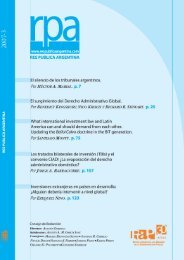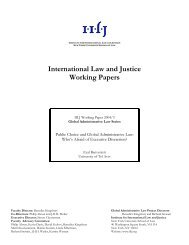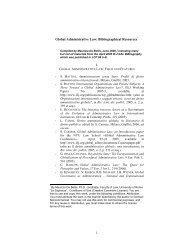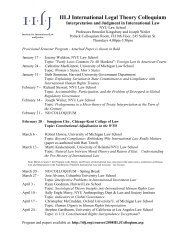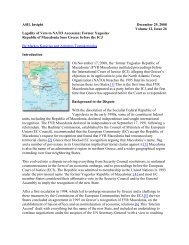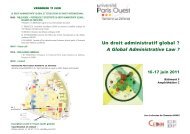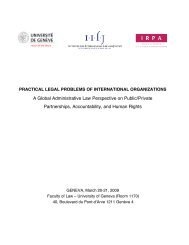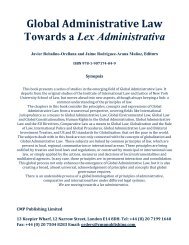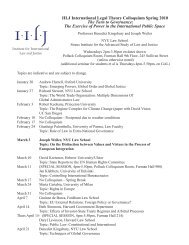brought under the dominican republic - central america - ita
brought under the dominican republic - central america - ita
brought under the dominican republic - central america - ita
Create successful ePaper yourself
Turn your PDF publications into a flip-book with our unique Google optimized e-Paper software.
vestment (which by <strong>the</strong>mselves are not expropriatory) can by <strong>the</strong>ir aggregation result<br />
in an unlawful expropriation.<br />
2.72. Was <strong>the</strong> relevant measure in <strong>the</strong> present case, as alleged by <strong>the</strong> Claimant, a continuous<br />
act or a composite act? This is important, if <strong>the</strong> continuous or composite act extends<br />
over a critical date, here <strong>the</strong> Claimant‟s change of nationality on 13 December<br />
2007.<br />
2.73. As regards a continuing act, <strong>the</strong> ILC Commentaries state <strong>the</strong> following:<br />
“Thus, conduct which has commenced sometime in <strong>the</strong> past, and which constituted<br />
(or, if <strong>the</strong> relevant primary rule had been in force for <strong>the</strong> State at <strong>the</strong> time, would<br />
have constituted) a breach at that time, can continue and give rise to a continuing<br />
wrongful act in <strong>the</strong> present.‖ 55<br />
In this situation, <strong>the</strong> unlawful act only starts when <strong>the</strong> rule which this act violates is<br />
applicable.<br />
2.74. As regards a composite act, <strong>the</strong> ILC Commentaries state <strong>the</strong> following:<br />
―In cases where <strong>the</strong> relevant obligation did not exist at <strong>the</strong> beginning of <strong>the</strong> course<br />
of conduct but came into being <strong>the</strong>reafter, <strong>the</strong> ‗first‘ of <strong>the</strong> actions or omissions of<br />
<strong>the</strong> series for <strong>the</strong> purposes of State responsibility will be <strong>the</strong> first occurring after <strong>the</strong><br />
obligation came into existence. 56<br />
Paragraph 1 of article 15 defines <strong>the</strong> time at which a composite act ‗occurs‘ as <strong>the</strong><br />
time at which <strong>the</strong> last action or omission occurs …‖ 57<br />
In this situation, <strong>the</strong> unlawful composite act is composed of aggregated acts and<br />
takes place at a time when <strong>the</strong> last of <strong>the</strong>se acts occurs and violates (in aggregate) <strong>the</strong><br />
applicable rule.<br />
55<br />
56<br />
57<br />
an analysis was performed by <strong>the</strong> tribunal in Société Générale, which referred to <strong>the</strong> concept of composite<br />
act and stated clearly that acts that are not illegal can become such by accumulation: “While normally acts<br />
will take place at a given point in time independently of <strong>the</strong>ir continuing effects, and <strong>the</strong>y might at that<br />
point be wrongful or not, it is conceivable also that <strong>the</strong>re might be situations in which each act considered<br />
in isolation will not result in a breach of a treaty obligation, but if considered as a part of a series of acts<br />
leading in <strong>the</strong> same direction <strong>the</strong>y could result in a breach at <strong>the</strong> end of <strong>the</strong> process of aggregation …”,<br />
Société Générale v. Dominican Republic, LCIA Case No. UN7927, Award on Preliminary Objections to<br />
Jurisdiction, 19 September 2008, § 91.<br />
ILC Commentaries, p. 61.<br />
ILC Commentaries, p. 64.<br />
ILC Commentaries, pp. 63-64.<br />
Part 2 – Page 22



